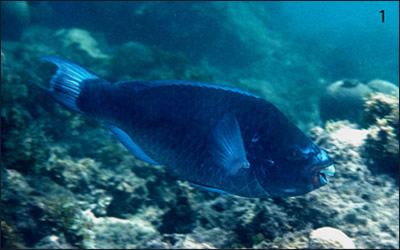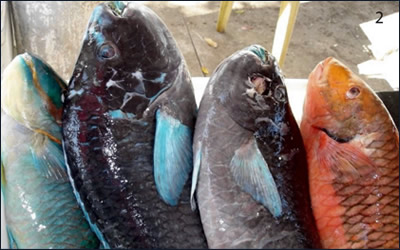A combination of biological traits and threats can be used to predict the vulnerability of reef fishes to extinction and facilitate species
conservation status assessments
While the anthropogenic pressures to marine ecosystems and its biodiversity continue to increase there is a continuous effort to assess the
conservation status of species in our oceans. Not only the IUCN (International Union for the Conservation of Nature) have created specialists
groups to evaluate species (IUCN Shark Specialist Group; IUCN Grouper & Wrasse Specialist Group, etc.) but there are also local and national
efforts to evaluate species’ vulnerability. However, in order to perform such assessments, specialists need species population data as well as
biological attributes, which is generally not available for the majority of species including the diverse reef fish group.
Released on April 16th 2013, the Oryx paper entitled “Biological attributes and major threats as predictors of the vulnerability of species: a case
study with Brazilian reef fishes” predicts the vulnerability of 523 reef fish species that occur in Brazilian waters based on the combination of
biological traits and the threats to 36 fishes already threatened with extinction. “Several studies already show that reef fish are in decline along
the Brazilian coast but there is no population data nor fisheries statistics available for all this species, so there is a need to provide information
on species conservation status using what is out there”, says the leading author Mariana Bender.
The group of Brazilian scientists that conducted the work found that sharks and rays, species with sex reversal and endemic fishes are the most
vulnerable among Brazilian reef fishes. Moreover, they found that body size and trophic category were two very good predictors of species
vulnerability to extinction. “These large-bodied fishes are not only disproportionately targeted by fisheries, but other traits contribute to increase
its vulnerability, such as slow growth, late maturity, and even spawning in aggregations, which is the case for some grouper and snapper species”
says Bender. High trophic level fishes – many of them being large-bodied – are also among the species with greater vulnerability to extinction.
For instance, 58% of threatened reef fish species in Brazil are macrocarnivores, generally the most affected by overfishing.
The model revealed interesting variable interactions that can increase the probability of a species being threatened: fish that guard their nests
and are targets of the ornamental trade, and species that change sex and are targeted by game fishing. Another interaction of concern is being
endemic (to the Brazilian coast) and large-bodied (target of reef fisheries) like the Greenlip parrotfish Scarus trispinosus (see figure) “These
dangerous combinations, as one can call them, can be applied to predict which fish species might be in risk of extinction elsewhere, such as the
Caribbean or the Pacific” explains Dr. Sergio Floeter.
“The ultimate goal of our work is to be used to help future evaluations of reef fish species conservation statuses, and by managers in species
conservation schemes”, notes M. Bender.
Along with Mariana G. Bender and Sergio R. Floeter, the Oryx publication was co-authored by Natalia Hanazaki, Carlos E. L. Ferreira, Alfredo
Carvalho-Filho, Fernando P. Mayer, Daniele A. Vila-Nova and Guilherme O. Longo.
Access to article: http://dx.doi.org/10.1017/S003060531100144X
|


